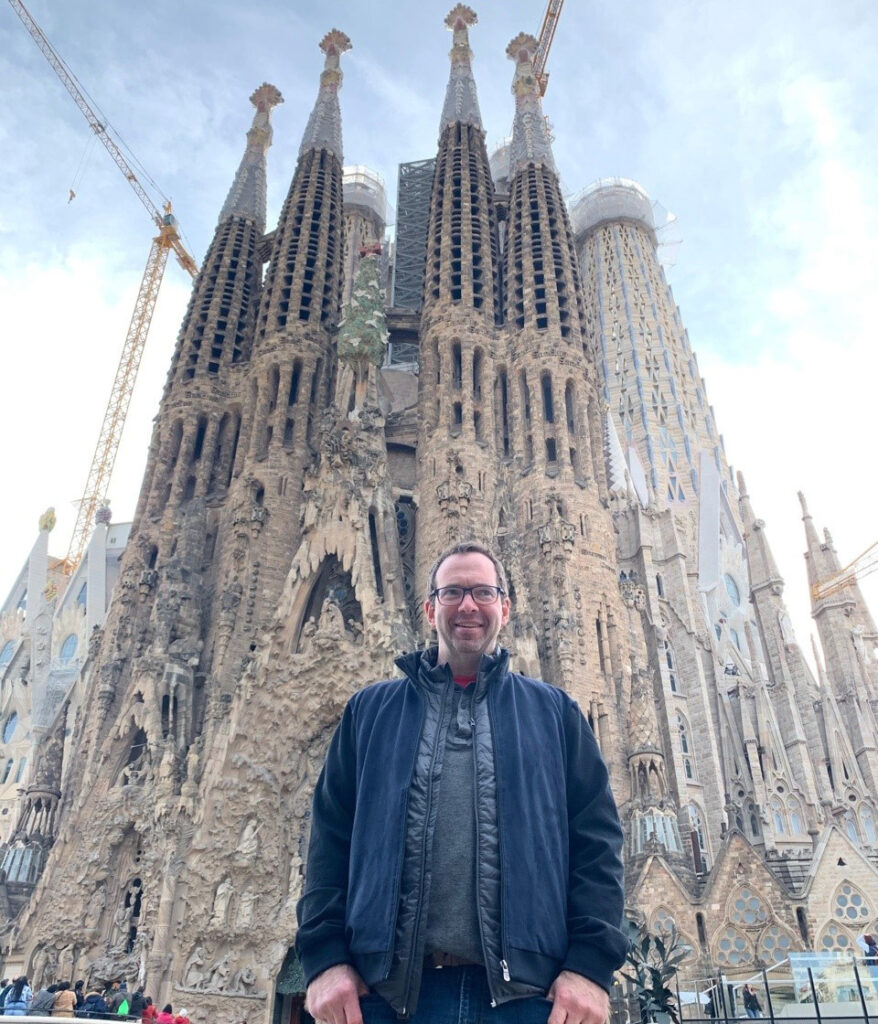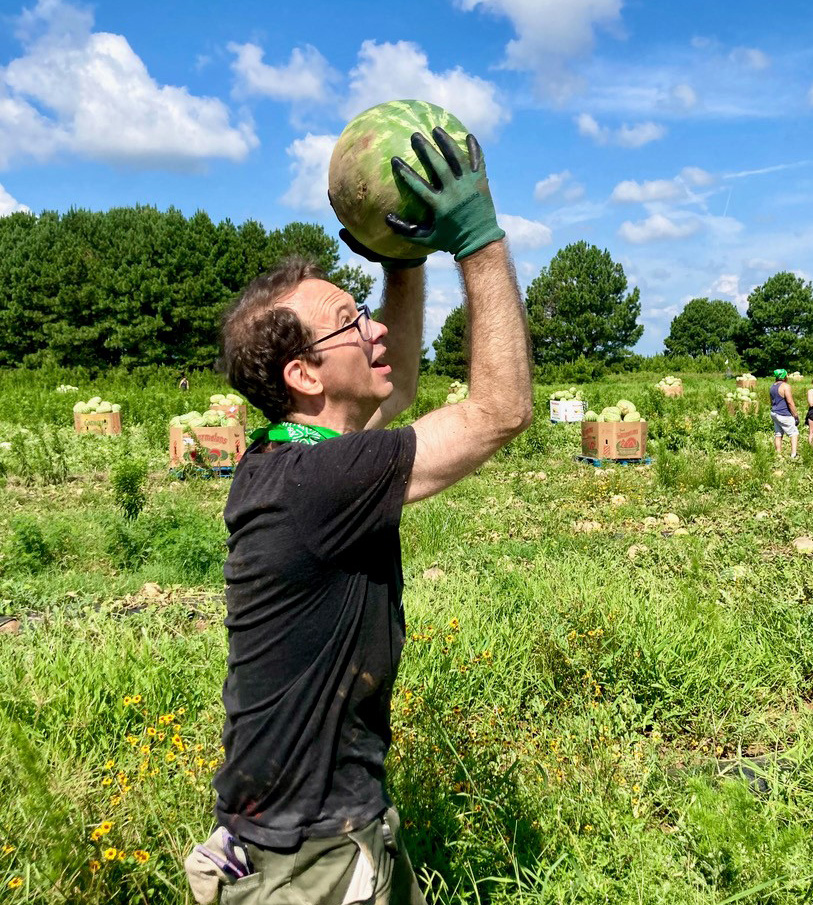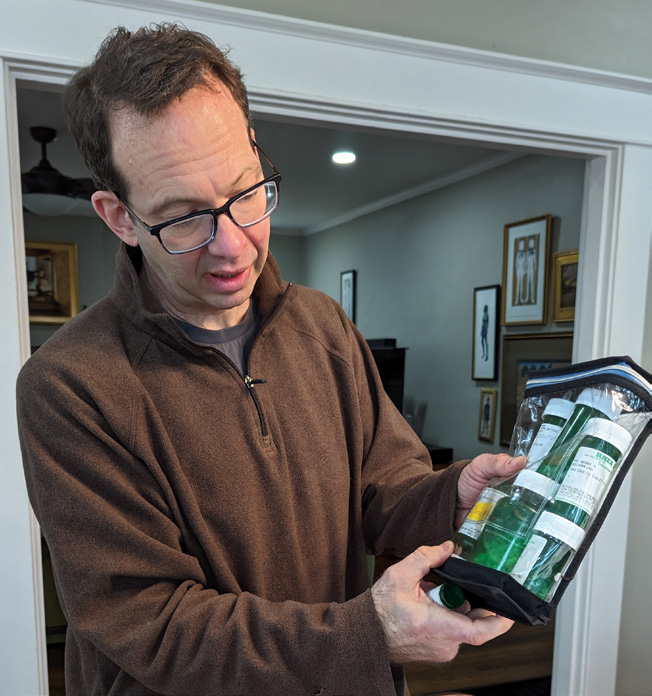Ask the Specialist: All About the Brain Injury Workshop
By: Chrystal Fullen, Psy.D., Clinical Neuropsychologist, Assistant Professor, UAMS

You may have read about our popular rehabilitation workshops in some of our recent survivor stories. This is a free resource that helps with thinking, mood, and skill building after brain injury. We asked Dr. Chrystal Fullen, the creator of the workshop, to answer some common questions about the workshops.
How often does it meet?
The workshop meets one day a week for 14 weeks, and each meeting lasts about 3 hours.
Who should sign up?
Anyone who has experienced a brain injury and is having symptoms such as problems with attention, memory, mood, or other issues. Types of brain injury can be moderate to severe TBI, stroke, anoxic brain injury, or other acquired brain injury. This group is not appropriate for people with mild TBI (concussion) or those who can’t understand and follow basic instructions.
Why should I attend?
Since many symptoms after brain injury are chronic, or something that is not going away, survivors need to learn ways to work around those issues. We offer rehabilitation that works at any stage after brain injury, whether you are 10 months or 10 years out.
We can help you understand your brain and build new skills. We target the most difficult symptoms that affect thinking skills, emotions, and relationships. In this workshop, we will work together to keep symptoms from getting in the way of your goals and to improve your quality of life.
What makes it different?
This workshop is different from other outpatient rehabilitation because:
- It is free. No insurance needed to attend.
- Every session includes invited experts from the community to discuss key topics like sleep, nutrition, intimacy, and PTSD.
- Different types of therapies are introduced throughout the 14 weeks, including cognitive rehabilitation, adjustment to injury counseling, animal-assisted therapy, art therapy, music therapy, yoga, and more.
- Our workshop has brain injury peer support specialists to help guide you in your journey.
Can my family attend?
Families and caregivers are encouraged to attend 4 of the 14 meetings, for the sessions that address caregivers and family dynamics.
Where is it located?
We have two group options that alternate. One group is in person at a comfortable facility near the UAMS campus in Little Rock. The other group is online. You can choose which group works best for you.
Ready to sign up?
Reach out to Dianne Campbell at 501-612-4982 or dcampbell4@uams.edu.
Want to suggest a topic? Email us at braininjury@uams.edu.
Survivor Story: Jan Williams
As Told to Brandi Dawson and Kristen Alexander

At first glance, with his slim build and casual clothes, Jan looks like your average 53-year old Arkansan living what you might think of as a very typical life in Little Rock. In reality, Jan Williams is one of the most interesting guys in
town. He is a gifted storyteller with a lifetime of adventures to share.
Jan holds an economics degree from Kalamazoo College, has traveled the world, lived in several different states, collects amazing art, restores furniture, and is a loving father. From creating his own artwork to designing plans for landscaping and more, Jan has a lot to offer the world. Even more impressively, Jan has built this remarkable life after suffering a traumatic brain injury in 1988 at the age of 17.
In 1988, Jan was attending Little Rock Central High School. He was a gifted senior, who had already been accepted to Kalamazoo College. Two months before graduation, he was on his way to school when a bus ran a stop sign,
plowing over the front of Jan’s car.
Jan is grateful for receiving excellent care at both the hospital and rehab, thanks to his dad, who was a neurosurgeon. Due to his accident and four-day coma, Jan put off his education at Kalamazoo for a year. In the meantime, he
completed rehabilitation and attended the University of Arkansas at Little Rock.
After a successful year at UA Little Rock, Jan decided he could handle going to Kalamazoo College in Michigan as planned. But upon starting, it was harder than he thought it would be. Much harder.
He had planned to study medicine like his dad but was surprised to find he now struggled with science, which was previously his strong suit. The next logical move seemed to be economics because his mom’s side of the family worked in finance. He finished his degree in economics after five long years.
During college, Jan discovered that learning a foreign language in the classroom was almost impossible for him because of his injury. Broca’s
area, which is the part of the brain that helps with speech, was damaged.
To overcome this challenge, he tried language immersion (living in the place where the language is spoken). He Lived in Florence, Italy for six months with a person who tutored him constantly. From there, Jan visited Barcelona, Morocco, Tunisia, Malta, Rome, Turkey, Greece, Egypt, and enjoyed Christmas in Slovenia. While Jan was visiting Turkey, he noticed that everything from streets to buildings to ponds, were named in honor of Turkey’s first president,
Mustafa Kemal Ataturk, whom everyone knew as Ataturk. This inspired Jan to write his final college thesis about Ataturk instead of a topic related to economics. After that, Jan no longer saw a path forward in economics.
After graduating, Jan lived in Ann Arbor, Michigan, and then decided to attend culinary school in Vermont. While there he met Gretchen. They were later married and had a child.
The truth was, Jan did not excel in the competitive world of culinary school, though he did enjoy his capacity for work as a dishwasher.
Jan always applies himself fully to a task, and he found peace in discovering the best way to wash dishes and keep a restaurant running at peak efficiency. Jan would go on to have other jobs in food service, as well as wrangling carts for grocery stores. For Jan, pushing carts was more than a physical job. While gathering the carts, he would use the time to problem-solve how to get customers to return their carts to the stalls, and as Jan jokingly declared, “Ask not for whom the cart rolls… it rolls for me.”
Home life had become stressful, and no one was getting enough sleep with a baby. After five years of marriage, Jan and Gretchen divorced. The growing pressures of parenting, work, marriage, and epileptic seizures had taken their toll.

In 2022, Jan’s child was old enough to be on their own, and Jan’s parents were getting older. He returned to Little Rock so he and his mother could keep an eye on each other. Upon moving to Little Rock, Jan joined the first UAMS Brain Injury Workshop with Dr. Fullen (see Ask the Specialist column above for details).
Jan has been through three other programs with the goal of rehabilitation from his TBI. Despite being decades out from his injury, this workshop was the most successful. He believes that is because it includes all the best properties of the other programs he has gone through, with ongoing support.
After participating in the very first workshop, Jan continued to be a part of later groups in an even larger role. He now helps to improve the program by offering input from the viewpoint of a traumatic brain injury survivor. He helps shape the content and make it more digestible, and his work has greatly contributed to the quality of the workshops.
These days, Jan uses many tools to help him manage his routine. “I’m almost constantly sifting through ideas, searching for what is failsafe and foolproof, but I know it’s impossible,” he says. But he still manages well. For example, he has a white board by his front door to remind him of the important events of today and tomorrow.
Throughout his house, there are sticky notes and lists that help Jan stay on track to get his goals done. He keeps a tablet on his bathroom sink, so he can see his schedule each morning and every time he passes through. He also has a special system to keep his medicines organized so he knows when they need to be refilled. He would be happy to share the details with anyone who is looking for a good system.

Thirty-five years post-injury, Jan still deals with difficult emotions. When asked how he copes with them, Jan said he regularly sees a therapist, takes his medications, and continues to look for ways to make social connections. Volunteering offers lots of chances to connect. He loves helping with Harvest Fest every year. He also attends a church and stays active in his Hillcrest community, as well as workshops and peer groups at UAMS. Jan also adds meaning to his days through art and many personal projects. His walls are covered in artwork and his porch has many beautiful wind chimes.
He is currently working on a creative landscaping project for his front yard. The inspiration for the project dates back to his years in college, when he absorbed many environmentalist messages: “Save the planet, save the trees, the dolphins, the polar bears, save this, save that. Bottom line is I got struck at 17 and even though I might not remember some important economic principle, I knew the difference between right and wrong and could not let this go,” Jan said. “After a lot of research and staring at the wall, I decided the most important thing is water.” So, he has been working with an artist and landscape architect to turn his front yard into an eyecatching statement about people’s water usage and the long-term impact that will have for mankind. It is designed to give the viewer an idea of drought and abundance and is
part of how Jan chooses to live out his values.
Jan’s advice for others living with a brain injury:
- Learn how to use technology, especially timers and reminders, to keep you on track with your days. For example: Have two hours to complete a task? Instead of setting a timer for an hour and a half or two hours, try setting it for 15 minutes and then just clicking repeat each time. This helps remind you to get back to the task if you get off track.
- Find a place to get involved and be around people, whether it is a church, volunteer group, or some other interest.
- Don’t focus on what you cannot do after your injury. Figure out what you are good at, even it if that is washing dishes.
- Go to the brain injury workshops! You won’t regret it. (see Ask the Specialist column above for details).
Want to share your story? Email us at braininjury@uams.edu.
Social Security Disability Pointers: Social Security Benefits Increase in 2024
By Tonya Cater, Social Security Public Affairs Specialist
More than 71 million Americans will see a 3.2% increase in their Social Security
benefits and Supplemental Security Income (SSI) payments in 2024. On average, Social Security retirement benefits increased by more than $50 per month starting in January.
Federal benefit rates increase when the cost-of-living rises, as measured by the Department of Labor’s Consumer Price Index (CPI-W). The CPI-W rises when inflation increases, leading to a higher cost-of-living. This change means prices for goods and services, on average, are higher. The cost-of-living adjustment (COLA) helps to offset these costs.
We will mail COLA notices throughout the month of December to retirement, survivors, and disability beneficiaries, SSI recipients, and representative payees. But if you want to know your new benefit amount sooner, you can securely obtain your Social Security COLA notice online using the Message Center in your personal my Social Security account at www.ssa.gov/myaccount. Since you will receive the COLA notice online or in the mail, you don’t need to contact us to get your new benefit amount.
If you prefer to access your COLA notice online and not receive the mailed notice, you can log in to your personal my Social Security account at www.ssa.gov/myaccount to opt out by changing your preferences in the Message Center. You can update your preferences to opt out of the mailed
COLA notice, and any other notices that are available online. Did you know you can receive a text or email alert when there is a new message waiting for you? That way, you always know when we have something important for you – like your COLA notice.
“Social Security and SSI benefits will increase in 2024, and this will help millions of people keep up with expenses,” said Kilolo Kijakazi, Acting Commissioner of Social Security.
January 2024 marks when other changes will happen based on the increase in the national average wage index. For example, the maximum amount of earnings subject to Social Security payroll tax in 2024 will be higher. The retirement earnings test exempt amount will also change in 2024. Learn more at www.ssa.gov/news/press/factsheets/colafacts2024.pdf.
Be among the first to know! Sign up for or log in to your personal my Social Security account today at www.ssa.gov/myaccount. Choose email or text under “Message Center Preferences” to receive courtesy notifications.
You can find more information about the 2024 COLA at www.ssa.gov/cola.
Please be aware that past newsletter issues may contain outdated information. For the latest updates on resources and events, visit our website or contact us at braininjury@uams.edu with any questions.
